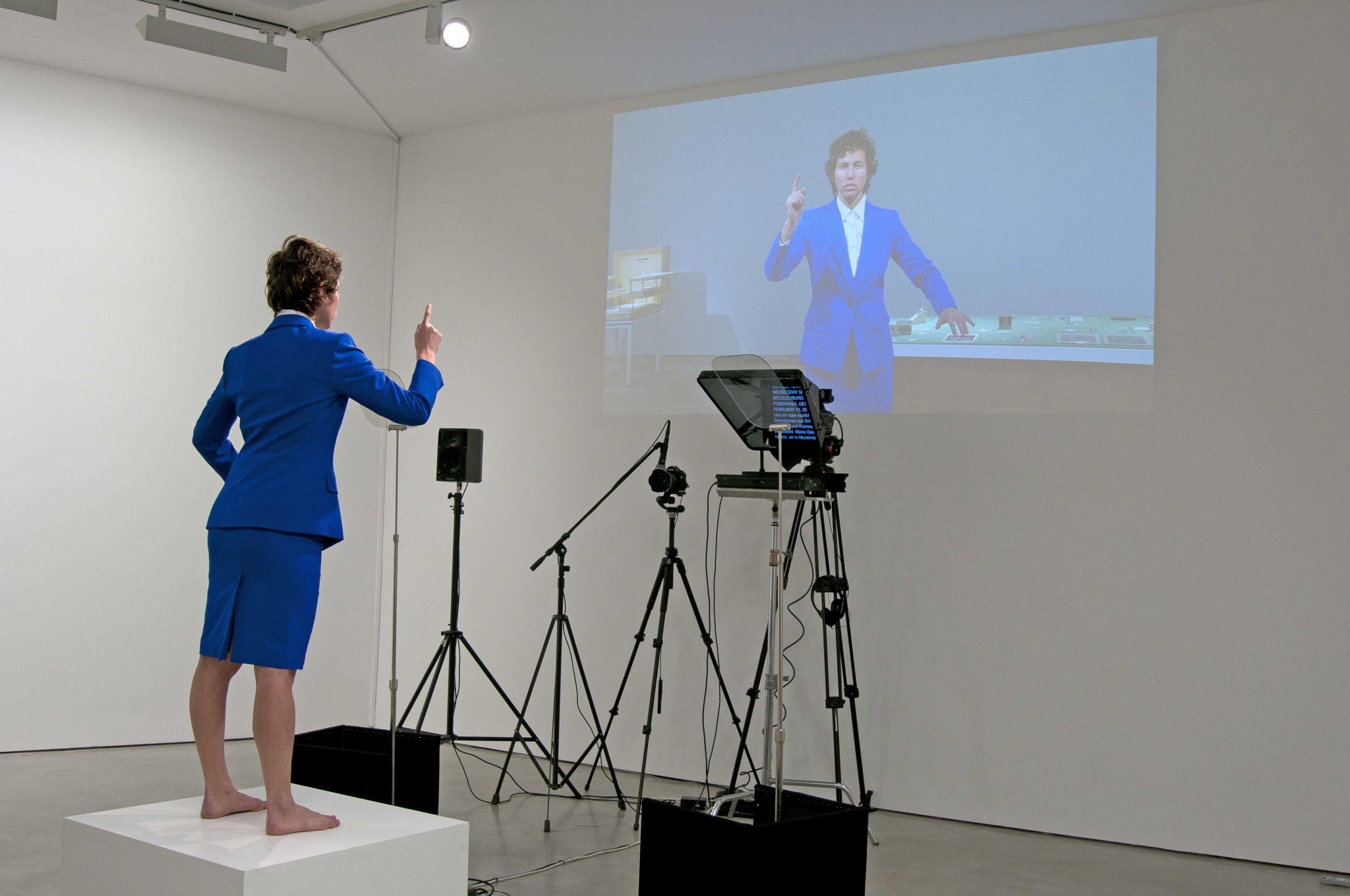Political power isn’t always to do with rational concepts such as democratic representation, or the enlightened self-interest of individuals or collectives, and the power of the state often extends into the symbolic and mythical aspects of everyday life. Whether it’s the Nazis’ Nuremberg rallies or the rituals that surround the office of the American president, political power, in the forms of the state, seeks to embed itself as an irrational, even magical force.
That’s certainly the contention of The Magic of the State, an elaborately coded group show of works whose emphasis is on how the unquestionable opacity of myth and ritual inflects even the supposedly secular forms of the modern state. Coded, because the Lisson show is one of two parallel exhibitions (the other running concurrently at the recently established Beirut, a curatorial nonprofit based in Cairo), and it’s tempting to see in the elliptical and labyrinthine narratives woven by these works a desire to avoid any too-explicit confrontation with immediate political conflicts and antagonisms.
In a way, such displacement from art as political activism is a huge relief. Riffing on unorthodox ethnographer Michael Taussig’s controversial eponymous 1997 book of ‘ficto- ethnography’, the works in The Magic of the State range dizzyingly in and out of fiction, historical documentation and performance. Most direct is Liz Magic Laser’s videotaped performance Stand Behind Me (2013), in which dancer Ariel Freedman mimes the hand and body gestures of current politicians and statesmen while the text of their speeches rolls silently by on autocues. Her overemphatic performance, stripped of the verbal rhetoric, becomes a sort of absurd ritual dance – but then, given how much of politicians’ performances are styled by the voodoo of spin doctors, you can see Laser’s point.
The way in which collective identity and the state is mythologised is deftly examined by Christodoulos Panayiotou’s assembling of archive photographs of visitors to what appears to be a Greek amphitheatre, in the years following Cypriot independence from Britain in 1960. There’s nothing much to the images – dignitaries, citizens and students in 1960s garb – but the cool repetition alerts us to the obsessive coding of civic form as a symbol of (sometimes invented) political ancestry.
By contrast, Ryan Gander’s odd little textual itemisation of various studio ephemera and professional notes, some to do with the artist’s project to establish a new art school, seems only tangentially connected to the overall theme; though these perhaps impishly suggest the artist’s own mercurial status as an artworld figure who appears to be everywhere and nowhere at once, and whose work loops constantly back into art’s historical and institutional self-mythologising.
The most ambitious works here are those that concoct the most bizarre links between current political anxieties and the premodern world. Anja Kirschner & David Panos’s inventive video Ultimate Substance (2013) makes links between the Greek economic crisis and ancient Athens’s development of coinage, switching abruptly from political commentary to staged scenes of naked Athenians hard at work mining and smelting silver. Goldin+Senneby similarly toy with the magical power of money in their licensed instructions for making a reproduction of an ‘alchemical oven’; and Rana Hamadeh’s elaborate The Big Board (2013) again picks up on ancient Athens, marshalling a bewildering array of references turning on epidemic, infection and inoculation as a metaphor for the state’s self- preserving resistance to revolution and disorder. Meanwhile Lili Reynaud-Dewar’s installation Cleda’s Chairs (2010) is a somewhat forced comparison between the account of her grandmother’s move from the country to the city, with video material drawn from Pasolini’s Notes for an African Oresteia (1975) in which the film director struggles with the politics of filming Aeschylus’s play in the newly independent ex- colonies of Africa – a tense faceoff over the exchange between modernity and tradition, secularism and ritual, with no clear winner.
There’s a problematic subtext to such complexities, however. To suggest that the state infiltrates society in ways we cannot fully apprehend risks acquiescing to the dangerous idea that people are incapable of ridding themselves of the security blanket of order, however oppressive, that the state provides. Link that to the confusion about why the Arab Spring has ‘stalled’, and you might end up with the dubious notion that radical social change is stymied because, deep down, we don’t want it to succeed. And that, perhaps, is the greatest act of sleight-of-hand the state can ever achieve.
This article was first published in the Summer 2013 issue.
